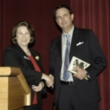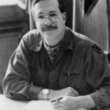The Guns at Last Light: The War in Western Europe, 1944-1945
(Libby/OverDrive eBook, Kindle)
Available Platforms
Description
#1 NEW YORK TIMES BESTSELLERThe magnificent conclusion to Rick Atkinson's acclaimed Liberation Trilogy about the Allied triumph in Europe during World War IIIt is the twentieth century's unrivaled epic: at a staggering price, the United States and its allies liberated Europe and vanquished Hitler. In the first two volumes of his bestselling Liberation Trilogy, Rick Atkinson recounted how the American-led coalition fought through North Africa and Italy to the threshold of victory. Now, in The Guns at Last Light, he tells the most dramatic story of all—the titanic battle for Western Europe.D-Day marked the commencement of the final campaign of the European war, and Atkinson's riveting account of that bold gamble sets the pace for the masterly narrative that follows. The brutal fight in Normandy, the liberation of Paris, the disaster that was Operation Market Garden, the horrific Battle of the Bulge, and finally the thrust to the heart of the Third Reich—all these historic events and more come alive with a wealth of new material and a mesmerizing cast of characters. Atkinson tells the tale from the perspective of participants at every level, from presidents and generals to war-weary lieutenants and terrified teenage riflemen. When Germany at last surrenders, we understand anew both the devastating cost of this global conflagration and the enormous effort required to win the Allied victory.With the stirring final volume of this monumental trilogy, Atkinson's accomplishment is manifest. He has produced the definitive chronicle of the war that unshackled a continent and preserved freedom in the West. One of The Washington Post's Top 10 Books of the YearA Kirkus Reviews Best Nonfiction Book of 2013
More Details
Excerpt
Similar Series From Novelist
Similar Titles From NoveList
Similar Authors From NoveList
Published Reviews
Booklist Review
Spanning D-day to V-E Day, Atkinson culminates his three-volume epic of the U.S. Army in Europe during WWII. Readers of the prior volumes (An Army at Dawn, 2002; The Day of Battle, 2007) will discover a thematic continuation in this one, namely, criticism of American generalship. Debacles such as Operation Market Garden, the Battle of the Hurtgen Forest, the Battle of the Bulge, and Patton's zany raid to liberate a POW camp punctuate the narrative of the U.S. Army's otherwise remorseless advance toward victory over the German army. To describe the high command's thinking concerning operations that turned into fiascoes, Atkinson funnels their postwar apologia through his appreciation of a particular battlefield situation, graphically conceptualized in this tome's excellent cartography. While casting generals in the light of human frailty, Atkinson allocates anecdotal abundance to soldiers' ground-war experiences. Emphasizing loss, he quotes many last letters from men destined to die. With a mastery of sources that support nearly every sentence, Atkinson achieves a military history with few peers as an overview of the 1944-45 campaigns in Western Europe.--Taylor, Gilbert Copyright 2010 Booklist
Publisher's Weekly Review
Adding to the trunkful of extended WWII histories by the likes of Sir Max Hastings, Andrew Roberts, Martin Gilbert, John Keegan, and Norman Davies, Atkinson, winner of two Pulitzers (for An Army at Dawn, the first in the Liberation Trilogy, and for reporting), concludes his series on the war in Europe and North Africa with this superb work. Though lacking an overall theme, the book is distinguished by its astonishing range of coverage-peopling the pages are German, British, French, Canadian, and (primarily) American generals and common soldiers. Excerpts from the letters of dead soldiers on both sides, as well as from the diaries of captain generals, fill out the story. Atkinson takes readers through battles large and small, strategy as well as on-the-ground tactics, accompanied by vivid maps (courtesy of "master cartographer" Gene Thorp). Drama, the absurd, and the desperately sad weave throughout the narrative. War, Atkinson writes, is "a chaotic, desultory enterprise of reversal and advance, blunder and elan, despair and elation." In his estimation, such was the war for both the victors and the vanquished. His lively, occasionally lyric prose brings the vast theater of battle, from the beaches of Normandy deep into Germany, brilliantly alive. It is hard to imagine a better history of the western front's final phase. Two 16-page b&w photo inserts, 29 maps. Agent: Rafe Sagalyn, Sagalyn Literary Agency. (May) (c) Copyright PWxyz, LLC. All rights reserved.
Library Journal Review
Atkinson (An Army at Dawn; The Day of Battle) continues his grand historical narrative of the World War II. Events in this volume begin on the stormy Normandy beaches and continue to the exuberant celebrations of Victory in Europe (V.E.) Day. There is more here than dry, petrified facts of battles won and lost. Atkinson's descriptions are vivid, the challenges faced by American soldiers are admirably presented, and passages quoted from contemporary letters breathe life into familiar names like Eisenhower and Patton. Atkinson has not only written an engaging account of the finale of World War II in Europe, he also narrates. Unfortunately, the voice work is monotone and detracts from the captivating portrayals of people who endured the greatest military conflict the world has known. VERDICT History buffs will find these stories engaging. Recommended for academic and public libraries. ["This is not a detailed account of any one particular battle but a sweeping epic, yet it is packed with fascinating details. Highly recommended to all who read World War II history, although those seeking detailed information about a specific unit or action may not find it here," read the review of the New York Times best-selling Holt hc, LJ 4/1/13.-Ed.]-Denis Frias, Mississauga Lib. Syst., Ont. (c) Copyright 2013. Library Journals LLC, a wholly owned subsidiary of Media Source, Inc. No redistribution permitted.
Kirkus Book Review
Atkinson (The Day of Battle: The War in Sicily and Italy, 1943-1944, 2007, etc.) brings his Liberation Trilogy to a resounding close. The war, of course, ended in Allied victory--though, it often seems even in these closing pages, just barely. Among the challenges were not just a ferocious German war machine that refused to stop grinding, but an Allied effort often hampered by internal disagreements and the inevitable jockeying for power. One skillful player was British general Bernard Montgomery, whom Atkinson captures with a gesture in an opening set piece: "With a curt swish of his pointer, Montgomery stepped to the great floor map." That map provided a visual survey of Overlord, the great 1944 multipronged invasion of Normandy, of which the author's long account is masterful and studded with facts and figures. Many of the key actors--Eisenhower, Patton--will be well-known to American readers, but others will not, not least of them Theodore Roosevelt Jr., the oldest general at D-Day and perhaps the bravest as well. American readers may also not know that British and Canadian troops landed elsewhere in Normandy on that day and paid a fearful price; Atkinson is to be commended for giving equal billing to those Allies. Toward the end, those Western Allies finally worked out some of their big differences, just in time for the final savage campaign of winter 19441945, which included the Battle of the Bulge. Atkinson assumes little outside knowledge of his readers, so his story is largely self-contained; as such, with the other volumes in the trilogy, it makes a superb introduction to a complex episode in world history. An outstanding work of popular history, in the spirit of William Manchester and Bruce Catton.]] Copyright Kirkus Reviews, used with permission.
Booklist Reviews
Spanning D-day to V-E Day, Atkinson culminates his three-volume epic of the U.S. Army in Europe during WWII. Readers of the prior volumes (An Army at Dawn, 2002; The Day of Battle, 2007) will discover a thematic continuation in this one, namely, criticism of American generalship. Debacles such as Operation Market Garden, the Battle of the Hürtgen Forest, the Battle of the Bulge, and Patton's zany raid to liberate a POW camp punctuate the narrative of the U.S. Army's otherwise remorseless advance toward victory over the German army. To describe the high command's thinking concerning operations that turned into fiascoes, Atkinson funnels their postwar apologia through his appreciation of a particular battlefield situation, graphically conceptualized in this tome's excellent cartography. While casting generals in the light of human frailty, Atkinson allocates anecdotal abundance to soldiers' ground-war experiences. Emphasizing loss, he quotes many last letters from men destined to die. With a mastery of sources that support nearly every sentence, Atkinson achieves a military history with few peers as an overview of the 1944–45 campaigns in Western Europe. Copyright 2012 Booklist Reviews.
Library Journal Reviews
Atkinson wraps up his "Liberation Trilogy," which opened with the Pulitzer Prize-winning (and best-selling) An Army at Dawn: The War in North Africa, 1942–1943 and continued with The Day of Battle: The War in Sicily and Italy, 1943–1944.
[Page 58]. (c) Copyright 2012. Library Journals LLC, a wholly owned subsidiary of Media Source, Inc. No redistribution permitted.Library Journal Reviews
Atkinson (former senior editor, Washington Post) has won Pulitzer Prizes in both journalism and history (An Army at Dawn). In this last book in his "Liberation Trilogy" on World War II, he continues to tout the bravery and sacrifice of soldiers and airmen. The book stands out from others on World War II because it successfully explores the fallibility of participants at all levels. Atkinson acknowledges the impact of infighting among volatile Allied generals, who egotistically pursued their own agendas and timelines, risking thousands of lives. He portrays the fighting as equal parts courage, cowardice, and chaos. Intermingled with the lurking fears among all involved was their feeling of being intensely alive. In exposing the vulnerabilities and imperfections of the enlisted men and officers, Atkinson does not diminish the overall heroism of their actions but instead humanizes their contributions. VERDICT This is not a detailed account of any one particular battle but a sweeping epic, yet it is packed with fascinating details. Highly recommended to all who read World War II history, although those seeking detailed information about a specific unit or action may not find it here. [See Prepub Alert, 11/19/12.]—Beth Dalton, Littleton, CO
[Page 89]. (c) Copyright 2013. Library Journals LLC, a wholly owned subsidiary of Media Source, Inc. No redistribution permitted.Publishers Weekly Reviews
Adding to the trunkful of extended WWII histories by the likes of Sir Max Hastings, Andrew Roberts, Martin Gilbert, John Keegan, and Norman Davies, Atkinson, winner of two Pulitzers (for An Army at Dawn, the first in the Liberation Trilogy, and for reporting), concludes his series on the war in Europe and North Africa with this superb work. Though lacking an overall theme, the book is distinguished by its astonishing range of coverage—peopling the pages are German, British, French, Canadian, and (primarily) American generals and common soldiers. Excerpts from the letters of dead soldiers on both sides, as well as from the diaries of captain generals, fill out the story. Atkinson takes readers through battles large and small, strategy as well as on-the-ground tactics, accompanied by vivid maps (courtesy of "master cartographer" Gene Thorp). Drama, the absurd, and the desperately sad weave throughout the narrative. War, Atkinson writes, is "a chaotic, desultory enterprise of reversal and advance, blunder and élan, despair and elation." In his estimation, such was the war for both the victors and the vanquished. His lively, occasionally lyric prose brings the vast theater of battle, from the beaches of Normandy deep into Germany, brilliantly alive. It is hard to imagine a better history of the western front's final phase. Two 16-page b&w photo inserts, 29 maps. Agent: Rafe Sagalyn, Sagalyn Literary Agency. (May)
[Page ]. Copyright 2012 PWxyz LLCReviews from GoodReads
Citations
Atkinson, R. (2013). The Guns at Last Light: The War in Western Europe, 1944-1945 . Henry Holt and Co..
Chicago / Turabian - Author Date Citation, 17th Edition (style guide)Atkinson, Rick. 2013. The Guns At Last Light: The War in Western Europe, 1944-1945. Henry Holt and Co.
Chicago / Turabian - Humanities (Notes and Bibliography) Citation, 17th Edition (style guide)Atkinson, Rick. The Guns At Last Light: The War in Western Europe, 1944-1945 Henry Holt and Co, 2013.
Harvard Citation (style guide)Atkinson, R. (2013). The guns at last light: the war in western europe, 1944-1945. Henry Holt and Co.
MLA Citation, 9th Edition (style guide)Atkinson, Rick. The Guns At Last Light: The War in Western Europe, 1944-1945 Henry Holt and Co., 2013.
Copy Details
| Collection | Owned | Available | Number of Holds |
|---|---|---|---|
| Libby | 1 | 0 | 7 |





































